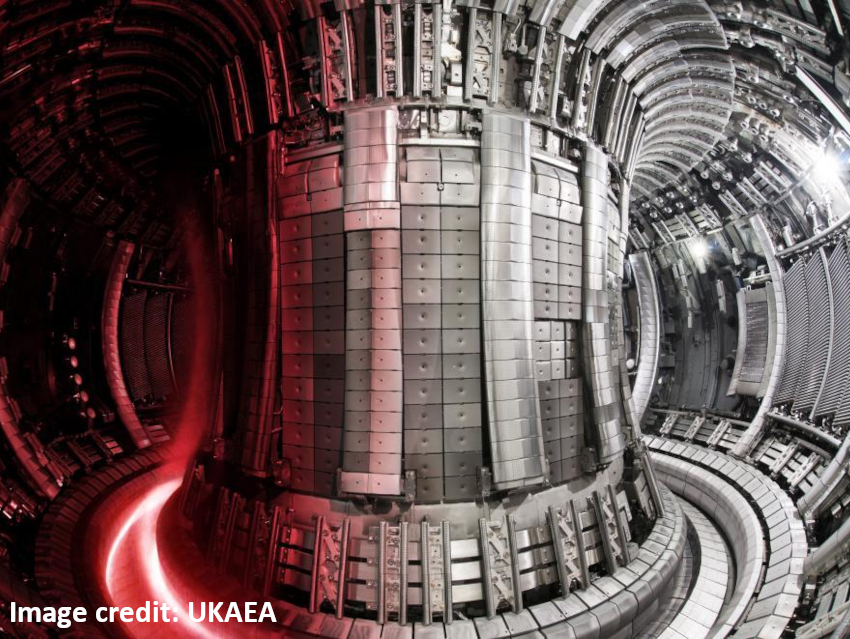Fusion power plants could create energy by nuclear fusion—the same way that stars like the Sun generate energy. In nuclear fusion processes that release energy, two light atomic nuclei (e.g., hydrogen nuclei) combine to form a heavier nucleus (e.g., a helium nucleus).
However, it is challenging to create and stabilize a plasma in which nuclear fusion can occur. Heavy hydrogen isotopes (deuterium and tritium) can react more easily than 1H, but using tritium as a fuel in research reactors adds an additional difficulty due to its rarity. In future power plants, tritium will be formed from lithium during energy production. In addition, neutrons released during the fusion reaction can degrade materials used within the reaction chamber. Releasing more energy from nuclear fusion than the heating systems consume to produce the plasma is still a goal for the future, and research into nuclear fusion reactors is ongoing.
Researchers working at the Joint European Torus (JET) fusion facility in Culham near Oxford, UK, have achieved a new world record in energy output: The team produced 59 MJ of energy output during a five-second phase of a plasma discharge. The reactor (pictured) is based on a tokamak design, in which a magnetic field is used to confine plasma in the shape of a torus. To improve on their previous record of 22 MJ, set in 1997, the researchers replaced the carbon lining of the plasma vessel with a more resistant mixture of beryllium and tungsten and used a deuterium-tritium fuel.
However, the JET facility is too small to produce net energy. Net energy production might be achieved using a larger reactor, such as the ITER (International Thermonuclear Experimental Reactor) in southern France, which is scheduled to come online in 2025. According to the researchers, the latest JET experiments are an important step for the transition to ITER.



